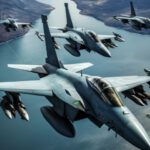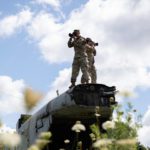Satellites and 3D Radar Will Drive the Aviation Evolution
Two technologies will change everything about commercial air control and communication: Satellites and 3D radar will drive the aviation evolution.
The evolution of commercial aviation technology is driven and supported by both engineering innovation and government intervention. Currently, there are two technological developments holding the industry’s attention: The transition from radar-based air traffic control to satellite control and upgrades to 3D radar weather detection.
 With the development of the US Federal Aviation Administration’s (FAA) NextGen air transportation system and Eurocontrol’s SESAR (Single European Sky ATM Research program) in progress and targeted for completion by 2020, the commercial aviation industry is adopting smarter satellite-based digital technologies along with new procedures.
With the development of the US Federal Aviation Administration’s (FAA) NextGen air transportation system and Eurocontrol’s SESAR (Single European Sky ATM Research program) in progress and targeted for completion by 2020, the commercial aviation industry is adopting smarter satellite-based digital technologies along with new procedures.
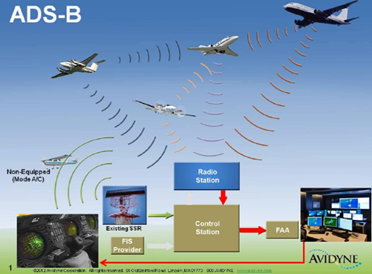 According to the FAA, the industry can expect “an evolution from a ground-based system of air traffic control to a satellite-based system of air traffic management.” It is expected that these advances will provide for more efficient, predictable, and environmentally friendly travel.
According to the FAA, the industry can expect “an evolution from a ground-based system of air traffic control to a satellite-based system of air traffic management.” It is expected that these advances will provide for more efficient, predictable, and environmentally friendly travel.
As part of the implementation of NextGen in the US, the FAA is developing ADS-B, the Automatic Dependent Surveillance-Broadcast network. By January 1, 2020, aircraft flying in designated US airspace must be equipped to broadcast their positions to the ADS-B network. ADS-B is set to replace the current radar surveillance system and provide air traffic control (ATC) with real-time data on an aircraft’s position along with unique identification information.
ADS-B increases capacity and throughput for domestic air transportation, providing more precise position information of airplane traffic to the cockpit.
ADS-B-compatible equipment is being integrated into avionics suites by manufacturers such as Rockwell Collins, Honeywell, Universal, and L3, applied to airliners as well as general aviation aircraft. In addition, there are many standalone ADS-B devices targeted for upgrades and retrofit across general aviation segments manufactured by Garmin, Sandia, and Avidyne, along with other global manufacturers.
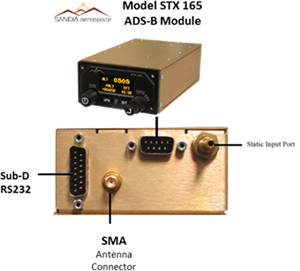 The VHF frequency spectrum supports both ADS-B (1090MHz) as well as radar-based radio transponders (1030MHz). Since both systems operate within the same frequency parameters, the connector interface, from an RF performance standpoint, can be satisfied with a relatively basic device.
The VHF frequency spectrum supports both ADS-B (1090MHz) as well as radar-based radio transponders (1030MHz). Since both systems operate within the same frequency parameters, the connector interface, from an RF performance standpoint, can be satisfied with a relatively basic device.
Although there are no mandated connector interfaces for ADS-B equipment, RF connectors with threaded interfaces such as N-Series, TNC, and SMA appear frequently in both OEM and aftermarket applications. In addition, snap-lock devices such as SMB have also gained acceptance for ADS-B application in general aviation, both on the module side as well as an antenna interconnect.
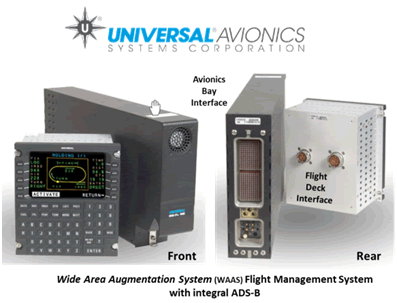 Typically, in civil aircraft, ADS-B is integrated into devices with multiple functions that use rack-and-panel connectors such as ARINC 600 series devices, capable of mixing signal, coax, and power contacts in a single device. These multi-function instruments are mounted in trays located in the avionics bay of the aircraft, tied to the cockpit via wire harnesses.
Typically, in civil aircraft, ADS-B is integrated into devices with multiple functions that use rack-and-panel connectors such as ARINC 600 series devices, capable of mixing signal, coax, and power contacts in a single device. These multi-function instruments are mounted in trays located in the avionics bay of the aircraft, tied to the cockpit via wire harnesses.
Beyond the NextGen initiatives, a new generation of weather radar, manufactured in separate versions by Honeywell and competitor Rockwell Collins Inc., is designed to reduce weather-related delays with an ability to scan for weather conditions across a wide swath of sky, hundreds of miles ahead of the plane.
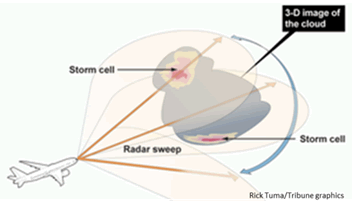 3D radar represents a technological leap ahead for onboard systems, which date back to the 1960s and provided a narrower view of weather conditions as well as an increased pilot workload. Those 1960s legacy systems required a pilot to manually turn knobs to tilt and re-tilt the disk-shaped radar antenna housed in the nose of the plane.
3D radar represents a technological leap ahead for onboard systems, which date back to the 1960s and provided a narrower view of weather conditions as well as an increased pilot workload. Those 1960s legacy systems required a pilot to manually turn knobs to tilt and re-tilt the disk-shaped radar antenna housed in the nose of the plane.
The Honeywell IntuVue 3D radar carries out seven tilts of the system’s 30-inch antenna about every 30 seconds, according to Honeywell Technical Sales. The system is rated to probe as far out as 370 miles straight ahead to show the weather en route, detect turbulence, predict lightning and hail, and automatically scan from the ground up to 60,000 feet in order to provide information at various altitudes.
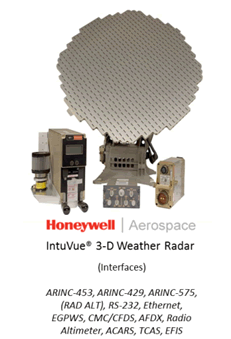 This system is positioned as an upgrade to current commercial air installations. It features the traditional circular connector interface for the cockpit controls with the process portion of the system located in the avionics bay, integrated into a typical tray arrangement via ARINC rack-and-panel-style connectors.
This system is positioned as an upgrade to current commercial air installations. It features the traditional circular connector interface for the cockpit controls with the process portion of the system located in the avionics bay, integrated into a typical tray arrangement via ARINC rack-and-panel-style connectors.
According to Honeywell Technical Sales, nearly 2,000 planes flown by more than 70 airlines worldwide currently are outfitted with the Honeywell IntuVue system, with an estimated 2,500 additional systems on order.
The commercial aviation industry is clearly on the cusp of major changes to existing technology that will require sophisticated, high-performance connectors that meet the challenges of in-flight controls and communications.
- Satellites and 3D Radar Will Drive the Aviation Evolution - October 6, 2014
- Regenerative Braking Systems in Rail Applications - February 13, 2014
- Reinventing Your Wheels: Auto Convergence Technology - November 18, 2013
